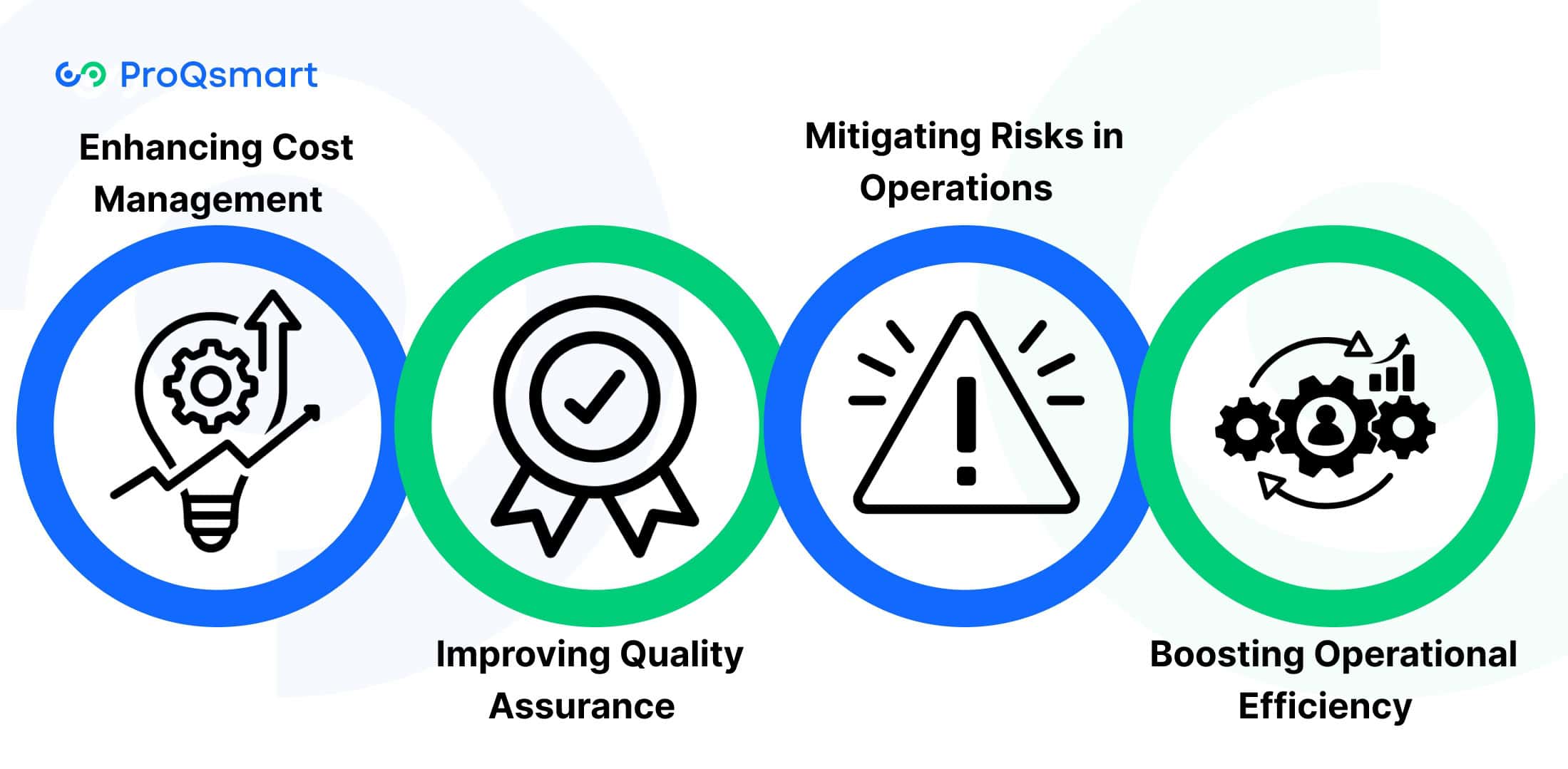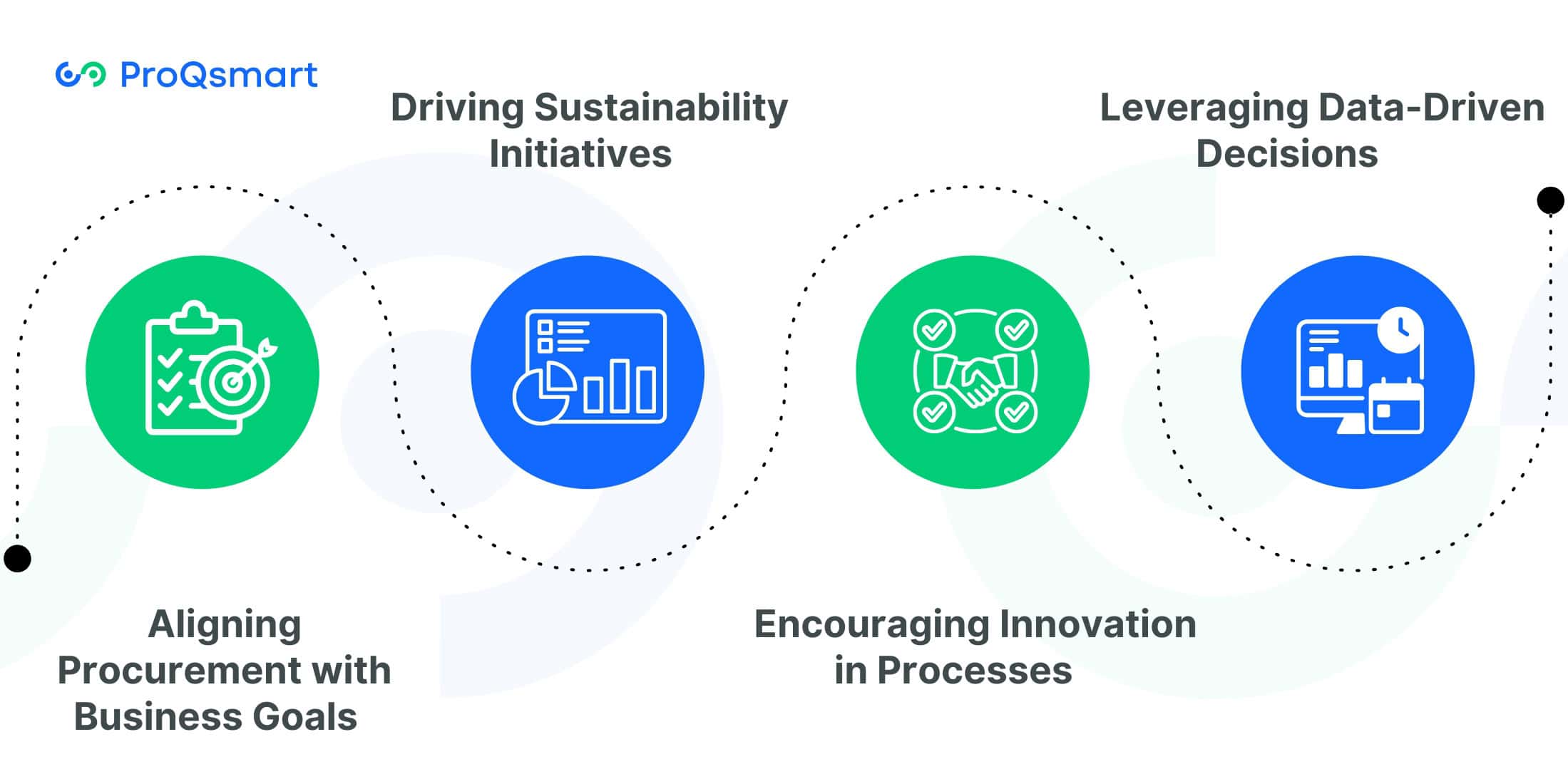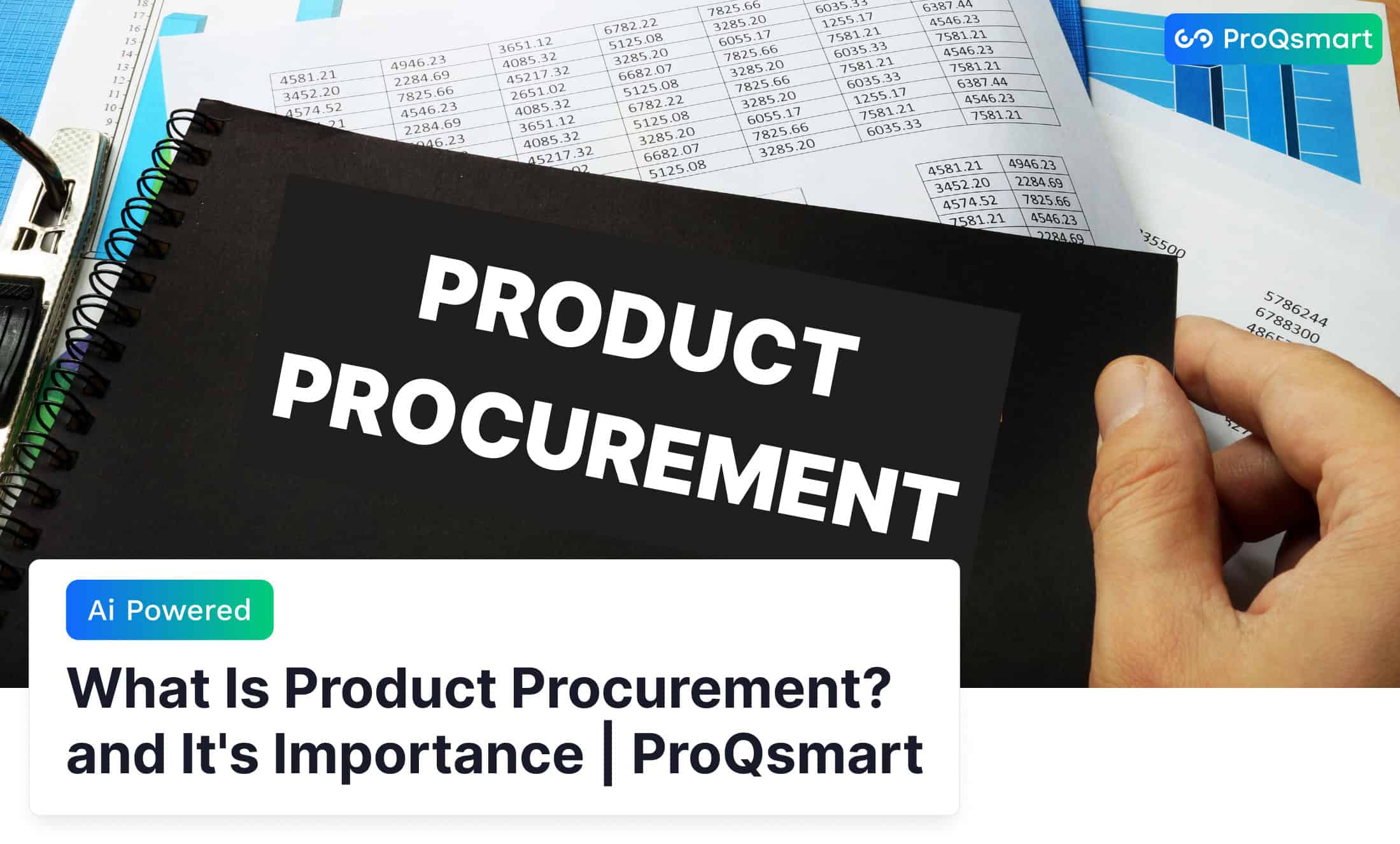Product procurement is a critical function that plays a vital role in the overall success of an organization. It involves the strategic process of sourcing and acquiring goods and services necessary for operations, ensuring that businesses have the right products at the right time. Effective product procurement goes beyond mere purchasing; it encompasses supplier selection, negotiation, and relationship management, all aimed at optimizing costs and enhancing quality.
The importance of product procurement cannot be overstated. It directly influences an organization’s operational efficiency, cost management, and ability to meet customer demands. By establishing robust procurement practices, companies can not only secure favorable terms and conditions but also foster strong partnerships with suppliers. This ultimately leads to improved product quality, reduced lead times, and a more resilient supply chain. Understanding the intricacies of product procurement is essential for organizations seeking to enhance their competitiveness and achieve their strategic goals.
What Is Product Procurement
Product procurement is the process of acquiring the goods and services that are necessary for a business to deliver their value proposition. You have to procure a complex array of products. This covers everything from raw materials, components, and parts to services and finished products that support production and everyday operations.
For example, a manufacturing firm would procure steel and machinery. On the flip side, a tech company might look to procure software or cloud services. Procurement is the lifeblood for any business. It guarantees they have the resources to attract the best talent to achieve their ambitious goals while remaining competitive with one another.
Key Benefits of Product Procurement

Category | Key Benefits |
Cost Efficiency | Reduced costs, improved cash flow, budget optimization, increased discounts. |
Product Quality | Consistent quality, proactive issue resolution, enhanced supplier collaboration. |
Operational Efficiency | Automated workflows, real-time budget tracking, streamlined processes. |
Supplier Relationships | Risk mitigation, trust-building, long-term collaboration, performance insights. |
Enhancing Cost Management
Procurement is the first line of defense against cost overruns. It opens up an avenue to advance cash flow stabilization and profit margin protection. Through the use of competitive bidding and negotiation between suppliers, organizations can achieve results that give them the best terms while keeping costs low.
Procurement automation tools supercharge this process through automation of repetitive tasks, eliminating manual entry mistakes, and increasing transparency. These tools can reduce process costs by up to 30%, enabling data-driven, outcomes-focused decisions that maximize return on investment.
Improving Quality Assurance
Quality assurance should be part of procurement, too, helping ensure that goods and services align with and uphold the values of the organization. Developing defined quality standards assists in ensuring products meet listed specifications, and routine supplier audits ensure ongoing compliance with these standards.
Supplier engagement is critical to resolving any identified defects and formulating and executing robust defect remediation plans. For example, tracking defect rates over time can identify patterns that inform the need for corrective action. Best practices, such as documenting quality checks and setting performance expectations upfront, create a proactive approach to maintaining reliability throughout the procurement lifecycle.
Mitigating Risks in Operations
Procurement plays a critical role in risk mitigation by identifying vulnerabilities, such as supplier performance issues or market fluctuations. A risk assessment framework helps prioritize potential threats, while contingency plans provide solutions for unexpected disruptions.
Regular supplier evaluations ensure reliability and reduce operational risks. For example, businesses might develop alternative sourcing strategies to address delays, maintaining continuity in supply chains.
Boosting Operational Efficiency
More efficient order procurement processes lead to quicker, mistake-free order fulfillment. Streamlining procurement through automation cuts down on administrative burdens and frees up procurement teams to focus on strategic, value-add activities.
Having both project teams and product suppliers on the same page benefits everyone—better communication leads to a more productive workflow. For instance, utilizing electronic procurement software can help public agencies measure cycle times, visibility into process bottlenecks, and even improve productivity.
Side-by-side comparisons of tools, such as ERP systems or dedicated procurement platforms like ProQsmart, help organizations choose solutions most aligned with their needs.
Product Procurement Process
A clear procurement management process is critical for maximizing efficiency, cost-effectiveness, and successful outcomes. Procurement typically controls a significant portion of company expenditure, ranging from 40% to 80%, making it vital for maintaining budgets. The overall procurement process is a complex web of interrelated steps, with each step being essential to ensuring that these organizations meet their goals and drive real change while maintaining transparency and accountability.
Identifying Business Needs
The procurement journey often starts with identifying business needs. This step involves taking stock of organizational needs to identify what goods and services are needed. By engaging with stakeholders, businesses can better understand priorities and obtain specific input.
Developing a scorecard of evaluation criteria is a great way to help define and narrow these needs. For instance, dissecting previous procurement data can identify trends or cyclical needs, informing future actions. Providing clear documentation helps facilitate smooth communication down the line with suppliers when issues can arise over misunderstandings.
Sourcing Suppliers
Finding trusted suppliers is the heart of procurement. Researching options and verifying supplier credibility ensures products are of high quality and consistency. Strategies like industry networking or attending trade shows help to diversify supplier pools, making the organization less dependent on single vendors.
Technology, such as e-procurement platforms, can help streamline the supplier discovery and evaluation process. Criteria like cost, ability to deliver, and meeting with company values narrow down the list.
Evaluating Supplier Proposals
Objective scoring of supplier proposals is key. Standardized approaches, such as scoring matrices that consider cost, quality and delivery schedule, help to compare bids side-by-side. Bringing in cross-functional teams ensures you have the right expertise while introducing new, diverse perspectives.
Documenting outcomes further aids in decision-making by providing a transparent process. When you share constructive feedback with your suppliers, you’re deepening your relationship and encouraging their continued improvement.
Negotiating Contracts
By negotiating the contract effectively, you will be able to lock in great terms. Preparation, including research on market trends and supplier capabilities, is critical. Incorporating basic provisions such as pricing structures, delivery timelines, and liquidated damages protects both parties.
Being clear and direct when negotiating creates trust, which leads to lasting relationships. Regularly reviewing contracts helps with ongoing compliance and proactively fixing things before they turn into problems.
Managing Supplier Relationships
Continuous supplier management helps to build supplier relationships. Public, understandable communication about the process and consistent, open evaluation of performance improves working together. Understand practices such as joint improvement projects that encourage win-win outcomes.
Openness and responsibility foster trust and mutual respect, which are essential elements of effective, enduring partnerships, driving sustainable procurement outcomes.
Monitoring and Reviewing Performance
Measuring supplier performance ensures ongoing improvement. Establishing KPIs such as on-time delivery or quality standards gives you tangible data. Conducting routine audits and using data analytics to monitor effectiveness can expose trends or gaps that need improvement.
By sharing these results with your suppliers, you not only increase accountability but motivate them to perform better.
Strategic Value of Product Procurement

Aligning Procurement with Business Goals
When procurement aligns with a company’s broader business objectives, it becomes a strategic powerhouse, driving financial prosperity and operational improvements. Effective procurement strategies should reflect the organization’s mission, ensuring that every decision supports long-term goals. Since external spending typically accounts for 50 to 80 percent of total project costs, aligning product procurement with overall cost efficiency can significantly enhance a company’s bottom line.
Engaging stakeholders from departments such as finance, operations, and marketing during procurement planning solidifies this alignment. A structured approach, including a checklist of goals like cost reduction, risk mitigation, and supplier diversity, can guide procurement strategies effectively. Additionally, organizations must track outcomes to ensure continued alignment and adapt as business objectives evolve over time.
Driving Sustainability Initiatives
Sustainability has become a key focus in procurement activities, emphasizing the need to consider value chain emissions. Sustainable sourcing prioritizes selecting green materials from suppliers committed to sustainable practices. By setting stringent sustainability requirements, procurement teams can encourage suppliers to lower carbon footprints and uphold ethical labor standards.
Focusing on outcomes rather than inputs allows for better tracking of compliance and accountability. Educating teams on sustainability issues ensures that procurement aligns with desired environmental and social outcomes, furthering an organization’s net-zero commitment. This strategic approach not only enhances sustainability but also drives enterprise value by fostering responsible practices throughout the supply chain.
Encouraging Innovation in Processes
Procurement teams can embrace these strategies to drive innovation:
Encourage brainstorming sessions within teams for fresh ideas.
Partner with suppliers to co-develop advanced solutions.
Implement AI-based tools such as ProQsmart to automate workflows, manage e-tenders, and bring new efficiencies.
Follow the latest industry trends like digital procurement to embrace new technologies.
ProQsmart’s intelligence-driven platform helps drive innovation by making it easier to understand, decide upon, and budget for innovations, while encouraging collaboration between suppliers.
Leveraging Data-Driven Decisions
Making procurement data-driven results in more informed strategies and more measurable outcomes. Analytics play a key role in monitoring critical metrics such as cost savings, supplier performance, and compliance rates. Surprisingly, most organizations don’t utilize even 20 percent of their procurement data, falling short of identifying opportunities to strengthen their program.
Platforms such as ProQsmart help to streamline all of this data, providing transparency and creating actionable insights.
Conclusion
Product procurement is a critical element in establishing effective operations. Not only does it reduce spending, it also bolsters relationships with suppliers and ensures operations are running efficiently. When armed with a smart procurement strategy and clear plan, businesses stand to make significant profits. More efficient workflows produce more creative outcomes, and smarter, sustainable product procurement supports our planet—and ultimately, our profitability.
By optimizing every step of the product procurement process, project teams can identify potential savings, minimize risks, and increase overall project efficiency. When you have the right tools and you’re proactive to the market trends, that’s when you really create value. Each move you make today lays groundwork for a more resilient tomorrow for your enterprise.
To elevate your procurement strategy, consider leveraging ProQsmart’s advanced features to create a more efficient and flexible system that drives innovation and success. Book a demo today to discover how ProQsmart can help you achieve improved outcomes and position your organization for long-term growth.



